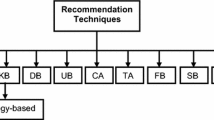Abstract
Ontology is an emerging technology in building knowledge based information retrieval systems. It is used to conceptualize the information in human understandable manner. Over the years, much importance was given to the systematic development of ontologies. As a result many methods and strategies to build ontology in different domains came up in the field of ontological engineering. These methods contained different steps to plan, design and build ontology efficiently. Most of these methods provided a generic structure to construct ontology. The development of ontology has cut across different domains and applications and this has arisen a need to develop methods to build ontologies in various applications. Nowadays, multilingual ontology applications are developed in various domains to have Knowledge based information retrieval according to the language preferred by user. Multilingual ontology allows sharing of information and data in different languages and thus facilitates multi-language users. A method to develop multilingual ontologies is in need now. In this paper, we propose an ontology mediation method to develop multilingual ontology applications. It explains the steps involved in the development process. A six step method is followed which is done iteratively to develop multilingual ontologies. Merging and mapping techniques are also used in mediation of multilingual ontologies. New algorithms are proposed for merging and mapping multilingual ontologies. The proposed method is experimented by developing multilingual ontology application for Thirukkural, the famous Tamil literature. The experimental results show that multilingual ontologies can be developed using the proposed method and semantic knowledge can be retrieved from the multilingual ontology.








Similar content being viewed by others
References
Kumar N (2013) Ontology based books information retrieval using SPARQL. Int J Comput Appl 67(13):0975–8887
Gómez-Pérez A, Fernández-López M, Corcho O (2004) Ontological engineering with examples from the areas of knowledge management, e-commerce and the semantic web. Springer, London
University, Standford. Protege. [Online] http://protege.stanford.edu/
Motta E. NeOn. [Online] [cited: 28 July 2014]. http://neon-toolkit.org/wiki/Main_Page.html
Osumi-Sutherland D. OBO—Edit. [Online] 23 July 2009. [Cited: 21 July 2010]. https://www.bioontology.org/wiki/index.php/OBO-Edit
KACTUS (1996) The KACTUS booklet version 1.0. Esprit Project 8145 KACTUS. http://www.swi.psy.uva.nl/projects/NewKACTUS/Reports.html
Swartout B et al (1997) Toward distributed use of large-scale ontologies. In: Symposium on ontological engineering of AAAI, Stanford, California
Uschold M, King M (1995) Towards a methodology for building ontologies. In: IJCAI’95 workshop on basic ontological issues in knowledge, Montreal, Canada, pp 6.1–6.10
Fernández-López M, Gómez-Pérez A, Juristo N (1997) METHONTOLOGY: from ontological art towards ontological engineering. In: Spring symposium on ontological engineering of AAAI, Stanford University, California, pp 33–40
Cristani M, Cuel R (2005) A survey on ontology creation methodologies. Int J Semant Web Inf Syst 1(2):48–68
Kietz JU, Maedche A, Volz R (2000) Method for semi-automatic ontology acquisition from a corporate intranet. In: EKAW’00 workshop on ontologies and texts, Juan-les-Pins, French Riviera
Aussenac-Gilles N, Biébow B, Szulman S (2000) Corpus analysis for conceptual modelling, vol 51. In: CEUR workshop proceedings, Juan-Les-Pins, France, pp 1.1–1.8
Fernández López M (1999) Overview of methodologies for building ontologies. In: Proceedings of the IJCAI-99 workshop on ontologies and problem-solving methods (KRR5), Stockholm, Sweden
Corcho O, Fernández-López M, Gómez-Pérez A (2003) Methodologies, tools and languages for building ontologies. Where is their meeting point?. Data Knowledge Eng 46(1):41–64
Dos Santos CT, Quaresma P, Vieira R (2010) An API for multilingual ontology matching. In: Proceedings of 7th conference on language resources and evaluation conference (LREC), Valletta, Malta, pp 3830–3835
Ganapathy G, Lourdusamy R (2010) Ontology merging and matching using ontology abstract machine. In: Proceedings of knowledge management 5th international conference, Malaysia
Dos Santos CT, Quaresma P, Vieira R (2008) A framework for multilingual ontology mapping. In: LREC
Schwall J (2007) Creating an ontology for a multilingual e-commerce dictionary. University of Münster, Munster
Mejía ME, Montiel-Ponsoda E, de Cea GA, Gómez-Pérez A (2012) Ontology localization. In: Suárez-Figueroa MC, Gómez-Pérez A, Motta E, Gangemi A (eds) Ontology engineering in a networked world. Springer, Berlin, Heidelberg, pp 171–191
De Melo G, Siersdorfer S (2011) Multilingual text classification using ontologies. Springer, Berlin
Shvaiko P, Euzenat J (2013) Ontology matching: state of the art and future challenges. IEEE Trans Knowl Data Eng 25(1):158–176
Lambrix P, Tan H (2006) SAMBO—a system for aligning and merging biomedical ontologies. J Web Semant 4(1):196–206
Hu W, Qu Y, Cheng G (2008) Matching large ontologies: a divide-and-conquer approach. Data Knowl Eng 67(1):40–160
Jean-Mary YR, Shironoshita EP, Kabuka MR (2009) Ontology matching with semantic verification. J Web Semant 7(3):235–251
Gangemi A, Steve G, Giacomelli F (1996) ONIONS: an ontological methodology for taxonomic knowledge integration. In: Proceedings of the workshop on ontological engineering, ECAI96
Noy NF, Musen MA (2003) The PROMPT suite: interactive tools for ontology merging and mapping. Int J Hum Comput Stud 59(6):983–1024
Stumme G, Madche A (2001) FCA-merge: bottom-up merging of ontologies. In: 7th international conference on artificial intelligence (IJCAI’01)
Noy NF, Musen MA (1999) SMART: automated support for ontology merging and alignment. In: Proceedings of the 12th workshop on knowledge acquisition, modelling, and management (KAW’99), Canada
Lourdusamy R, Florrence JM (2016) Methods, approaches, principles, guidelines and applications on multilingual ontologies: a survey. ICTACT J Soft Comput (IJSC) 7(1):2229–6959
Beckett D. What does SPARQL stand for? SPARQL. [Online] 6 Oct 2011. [Cited 21 July 2016]. https://en.wikipedia.org/wiki/SPARQL#cite_note-2
Acknowledgements
This research is financially supported by the University Grants Commission (UGC) of Government of India and Grant MRP-5765/15(SERO/UGC).
Author information
Authors and Affiliations
Corresponding author
Rights and permissions
About this article
Cite this article
Joseph, M.F., Lourdusamy, R. Ontology mediation method for building multilingual ontologies. Int. j. inf. tecnol. 10, 11–19 (2018). https://doi.org/10.1007/s41870-017-0068-x
Received:
Accepted:
Published:
Issue Date:
DOI: https://doi.org/10.1007/s41870-017-0068-x




